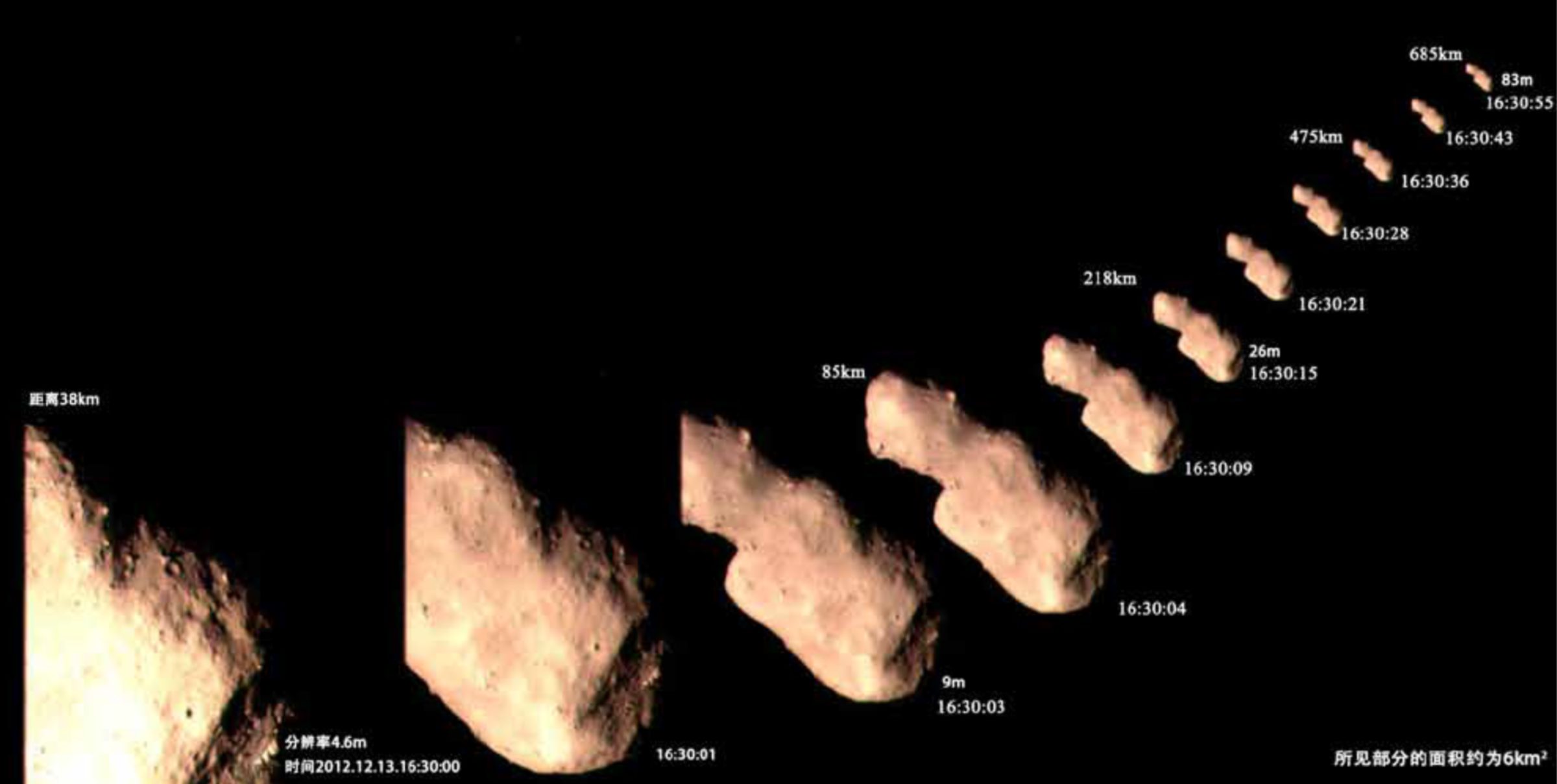SEPTEMBER 27, 1858: A British portrait painter and photographer, William Usherwood, takes a photograph of Comet Donati 1858 VI, the first photograph ever taken of a comet. No copies of Usherwood’s photograph are known to exist. Comet Donati is next week’s “Comet of the Week.”
SEPTEMBER 27, 1990: The Hubble Space Telescope observes Comet Levy 1990c and successfully takes images of the inner coma. This was the first time that Hubble had observed a comet. Comet Levy is a previous “Comet of the Week.”
SEPTEMBER 27, 2007: NASA’s Dawn spacecraft is launched from Cape Canaveral, Florida. Dawn orbited the large main-belt asteroid (4) Vesta from July 2011 to September 2012 then departed for the largest main-belt asteroid, (1) Ceres, where it arrived in March 2015 and where it remains, although its mission formally ended in late 2018. The Dawn mission is described in a previous “Special Topics” presentation.
SEPTEMBER 27, 2020: The “active asteroid” (6478) Gault, a previous “Comet of the Week” which passed through perihelion early this year, will be at opposition. It is currently located in southern Pisces and traveling towards the southwest; it has been inactive during the recent past and is presently around 17th magnitude.
SEPTEMBER 28, 1969: A brilliant daytime meteor appears over the Australian State of Victoria and falls to the ground near the town of Murchison. The Murchison meteorite is a carbonaceous chondrite, and has become one of the most studied meteorites in history. Carbonaceous chondrites are the subject of this week’s “Special Topics” presentation.
SEPTEMBER 28, 2013: Images of “asteroid” (6478) Gault taken with the Dark Energy Camera (DECam) at Cerro Tololo Inter-American Observatory in Chile show Gault to be exhibiting tail activity, although this was not noticed at the time. This was the first indication of activity in this “active asteroid.”
SEPTEMBER 30, 1858: Comet Donati 1858 VI, one of the 19th Century’s most spectacular comets, passes through perihelion at a heliocentric distance of 0.578 AU. It is next week’s “Comet of the Week.”
SEPTEMBER 30, 2016: After orbiting Comet 67P/Churyumov-Gerasimenko for two years, ESA’s Rosetta spacecraft successfully touches down upon the comet’s surface and concludes its mission. Comet 67P is a previous “Comet of the Week” and Rosetta is discussed within that presentation.
OCTOBER 1, 1847: An amateur astronomer in Nantucket, Massachusetts, Maria Mitchell, discovers a comet (old style 1847 VI, new style C/1847 T1) which passed through perihelion a month and a half later at a heliocentric distance of 0.329 AU. Mitchell would go on to become the first American female professional astronomer and taught astronomy at Vassar College for 23 years.
OCTOBER 1, 1949: An Irish engineer, Kenneth Edgeworth, publishes a paper wherein he proposes the existence of primordial “condensations” beyond Neptune’s orbit that would occasionally enter the inner solar system as comets. A similar idea was independently proposed the following year by American planetary scientist Gerard Kuiper, and although these ideas lay dormant for the next few decades, they were later revived and form the genesis of the “Kuiper Belt,” which has now been observationally verified. The Kuiper Belt is the subject of a previous “Special Topics” presentation.
OCTOBER 1, 1987: A team of French astronomers led by Roger Ferlet publishes a paper discussing short-term changes in the spectrum of the young star Beta Pictoris and suggesting that these may be due to comets falling onto the star. The existence of “exocomets” around Beta Pictoris was verified in early 2019 by NASA’s TESS satellite. The Beta Pictoris “exocomets” are discussed in a previous “Special Topics” presentation.
OCTOBER 1, 2010: NASA’s Wide-field Infrared Survey Explorer (WISE) spacecraft discovers the asteroid 2010 TK7, the first – and so far only – known example of an “Earth Trojan” asteroid. Trojan asteroids are the subject of a future “Special Topics” presentation.
OCTOBER 1, 2010: China’s Chang’e 2 mission is launched from the Xichang Space Center in Sichuan, China. After spending eight months at the Earth-sun L2 Lagrangian point, Chang’e 2 departed for the Apollo-type asteroid (4179) Toutatis, which it flew by in December 2012. The Chang’e 2 mission is discussed in a previous “Special Topics” presentation.

OCTOBER 2, 1961: The large main-belt asteroid (2) Pallas occults the 9th-magnitude star HD 215764 in Aquarius. Successful observations of the occultation were made from South Africa and from India, making this the first successfully-observed occultation of a star by an asteroid. These events are the subject of a previous “Special Topics” presentation.
OCTOBER 2, 2017: The Pan-STARRS survey program in Hawaii discovers the comet formally designated C/2017 T2. This comet passed through perihelion this past May and became bright enough to detect with ordinary binoculars; it is a previous “Comet of the Week.”
OCTOBER 3, 1815: A meteorite falls to the ground near the village of Chassigny in northeastern France. The Chassigny meteorite has been found to have come from Mars and is the earliest known Martian meteorite to have come from an observed fall. It differs somewhat in composition from most other known Martian meteorites and is the prototype of its own class of these objects.
OCTOBER 3, 1911: Johann Palisa at the Vienna Observatory in Austria discovers the asteroid now known as (719) Albert. Albert is an Amor-type asteroid and was only the second near-Earth asteroid to be discovered, however, it was only followed for two weeks and subsequently lost until its re-discovery in 2000. Its story is told in more detail in the Week 2 “Special Topics” presentation.
OCTOBER 3, 2018: The Mobile Asteroid Surface Scout (MASCOT) rover carried by JAXA’s Hayabusa2 mission successfully soft-lands on the surface of the near-Earth asteroid (162173) Ryugu, and carries out several scientific observations over the next 17 hours before its battery power runs out. The Hayabusa2 mission is discussed in a future “Special Topics” presentation.
More from Week 40:
Comet of the Week Special Topic Free PDF Download Glossary
Ice and Stone 2020 Home Page


